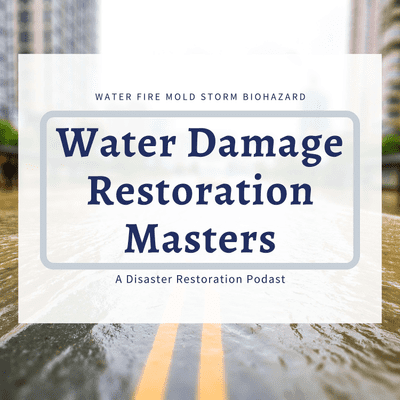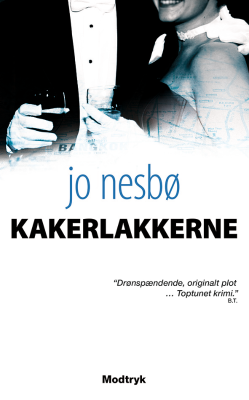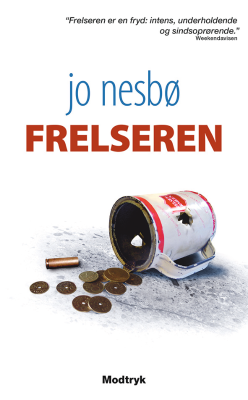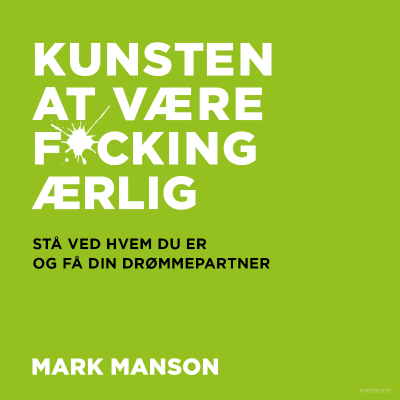
Water Damage Restoration Masters
engelsk
Videnskab & teknologi
Begrænset tilbud
3 måneder kun 9 kr.
Derefter 99 kr. / månedIngen binding.
- 20 lydbogstimer pr. måned
- Podcasts kun på Podimo
- Gratis podcasts
Læs mere Water Damage Restoration Masters
The Water Damage Restoration Mastery podcast is where you will learn everything about Disaster Restoration. Week by week listen to professionals who talk everything related to Disaster Restoration from the best equipment and techniques, business and legal advice to advise. We take you through the world of water damage restoration on how to manage jobs with insurance companies, disaster management planning and what to do in an emergency.
Alle episoder
11 episoderFlood Damage Restoration in Water Drying Clean-up
Please visit our water damage restoration service [https://www.facebook.com/waterdamagecharlotte] company Facebook page for more information on the water damage restoration process and to connect with experts in the industry. Also, see our contact info and website below to get ahold of a water damage contractor directly. Water Damage Restore Charlotte Charlotte, NC 28210 (704) 326-7358 https://re-building.com/water-damage-charlotte/ [https://re-building.com/water-damage-charlotte/] While we found in the earlier presentations can be definitely a health risk, nor want that mold within our home or it'll start triggering all of us difficult later on therefore the structural drying can be a critical step in the cleanup process intended for structural drying to happen, we need to open up all the enclosed areas so we're talking starting. Opening the walls in the event that we have the floor whether or not it's vinyl and got water underneath. All of us have to open all of them up, to ensure that we may dry which drying might take just several times or it may consider weeks it'll be based upon the drying conditions or just how much airflow that all of us get gone through. The drying process really entails circulating air across all those surfaces we have to get them opened up. We have to obtain airflow blowing against that surface to aid in the drying process after which we want to ensure that the air that we're shifting throughout the structure is dried out air. The way in which that we perform that is to produce outside air in which dry and it accumulates moisture from within the home after which we wear out that towards the outside and what we ought to recommend is that placing a fan in the window facing out once again to ensure that we're drawing the environment into the house and in throwing out the environment to the outdoors to obtain a good suction created. Inside that, we can remove gallons of water a day with moving outdoor air through the house where the majority of our house dehumidifiers are going to be getting pints of water each day. So once we start obtaining the framework, dried down then all of us are able to proceed to use no fire but at first, what we are going to going wish to accomplish is usually to be utilizing a lot of outdoor airflow moving by to dried out the structure. Into fall and into cooler temps or in the springtime if we're taking a look at spring water damage in Charlotte, NC [https://twitter.com/WaterDamage_NC]. We can and increase the moisture-holding capacity with the addition of heat to the airflow but you should try that all of us do both warm. The air and move the environment or exchange the environment that's within the house, the other point would be the hotter it is the more rapid mold will develop and thus there's a very little bit of a managing act. Generally, what all of us check out is keeping the air temperature in the home or in the structure under about 73 degrees that's warm. Enough that get good evaporation occurring good drying happening but we're not therefore wired that we're actually improving the mold development. But we need both the warmth and exchange in the air in the event that we do not have the home windows open to bring dried out outside area and we are going to just go to produce drying that we're heading to have warm damp air in the home and not really accomplish drying and thus we all need to still in the least. Periodically be starting the windows getting the air exchange as well as having the friendliness to aid enhance the evaporation we need to continue drying until the dampness or the content of the wood is low enough that we're not really going to have mold growth and typically what we're looking at with mold growth again is usually moisture contents of the wood exceeding about 16%. Our goal should usually be to obtain the moisture content of the water damage material of the wood below 15% as quickly as. I recently posted on my blog https://water-damage-charlotte.business.site/ [https://water-damage-charlotte.business.site/] about moister content on a water damage job I did in charlotte. All of us can and also all of us can't be enclosing any kind of walls or doing any kind of reconstruction until we're beneath that 16% moisture content material and what we possess on the slide right here shows that at seventy percent humidity at approximately room temperature that places us at just below 16% moisture. You'll observe different numbers some will certainly say we need to be considered a down to 13 percent moisture to assure that we're never heading to have any mildew growth and that is usually going to be more secure but certainly we require to be under 16%. The only way that we'll know when the moisture content is low enough is to make use of a moisture meter. In fact, check the moisture content material of the wood and examine the moisture content of materials. There are a couple of different sorts of meters a number of all of them, actually have little hooks at the end that you push into the wood and primary the moisture content or maybe the material others have some pads upon the back and you simply set it up on the surface but this will surely measure the moisture content. That method, but it's important that either you check the moisture content and possess someone else, examine the dampness content before you are doing any kind of rebuilding restoration service [https://re-building.com/water-damage-charlotte/] in Charlotte, NC. Make sure that the wood is dried out the NDSU Extension Services has moisture meters obtainable in our county expansion office's that you can check out and make use of to examine the moisture content material many of the companies. But when we begin referring to basements it will certainly take a long period for the moisture that is inside the soil to dry out which dampness will be getting into the basement. It may, in the beginning, come in because proven with this picture in liquid form nevertheless more often it's heading to be within a vapor form and therefore it will eventually look dry. Yet there might actually become gallons of drinking drinking water per day coming through the concrete which is definitely rather poorest of to vapor and it'll arrive through for the reason that vapor type and increase the dampness load in your home. So we all need to be worried about keeping the venting going not simply to dry the materials yet to handle the dampness load that will end up being coming in through the basement. We're taking a look at this dried out down process in the basement of taking several weeks therefore despite the fact that the key flooring we are able to dry and probably repair rapidly with flood clean up contractor [https://sites.google.com/view/water-damage-charlotte/] really needs to be delayed until it can be assured that there is no dampness coming through. Another issue that will frequently find after a flood event or when we have got a lot of dampness in the soils can be that we have this white fluffy material that shows up along breaks as well as the floor or maybe also just appearing on the concrete floor. Throughout the house has dissipated because areas all dried away in order that offers to the end from the section on drying your home and exactly how essential it is that individuals perform dry out the framework this course of five videos hopefully will help you as you consider a look at carrying out the cleanup in your house or if you aren't taking a look in having someone help you with it to learn that the steps that they will be going through.
Water Damage Restoration Clean-up: Process 2
In this podcast, we're going to be continuing some, even more, looking at using the clean-up process some of the washing and sanitizing elements. While working in Minneapolis as a water damage contractor at re-building.com/water-damage-minneapolis [https://re-building.com/water-damage-minneapolis/] I got a number of experiences about water damage clean up related to the outdoors wall of the residence. and generally whatever we will certainly find is that the exterior wall can't well dry because there's enough once the wall is opened up. There's enough exposure both on the inside and outside to effectively dry it but right now there are some things that you'll want to take a look at. For more information and to contact our water damage contractor directly find our contact information and company location below. Water Damage Pro Minneapolis 1917 Park Avenue Minneapolis, MN 55404 (612) 400-8523 We look at a stone facing on a home Minneapolis while providing water damage restoration services [https://sites.google.com/view/minneapoliswaterdamage], we want to make certain that the weep holes will be open to ensure that the normal water is draining out of that wall cavity, making sure that we've got airflow there to help with the drying of that brick facing. In the event we're going with a stucco facing on a house we'll be beginning up that wall cavity on the inside. Once again, making sure that we have good airflow in order that was drying both the inside and outside of that stucco surface. Today have airflow on both sides that may or may not be able to be salvaged inside the lower part. In the left photo, it really shows that with almost all of our homes we have a sheathing surface that the exterior siding or whatever is usually applied against and that cheating really will dry out typically as a result of our vinyl siding. Our steel slipping the lap siding most allow a fair sum of airflow through them to allow for that drying process to consider the place which means you really want to open the wall structure look into it but regularly what we will anticipate is the fact outside wall can dry down and we all will not have to really take that part of the wall apart. In many instances, no two types of water damage are the same. There can end up being varying amounts of normal water, varying types of materials damaged, and many more factors to take into consideration. Our water restoration contractors in Minneapolis, MN [https://www.google.com/maps?cid=10582495473868970856] are experienced technicians and take water damage restoration service very seriously. We understand that every situation is unique and always give the correct alternatives to restore your house. Then we look at washing the structure and the suggestion is to use drinking water and flush all of the non-porous surfaces. A few types of the sprayer is displayed in that leading picture does work quite well too, to flush off all of the greater mud and debris. Once we have it flushed away then, we come in and actually use a detergent to scrub off the surface and really can be my command that is a two bucket program, one which has detergent in it and then a second one that it's the rinse bucket. So whenever we get done scrubbing up, we rinse out each of our mop or our clothes or whatever we're employing in the rinse bucket until it's clean. In that case, we go into the detergent bucket and again to the cleaning surface area and we'll have to alter the water in that rinse bucket frequently since we're removing the dirt and grime and cleaning the surface area. They really recommend a phosphate soap or detergent be used as a result of phosphate detergent can leave a film on the surface that mold will grow easily on, so we favor a non-phosphate type detergent. Once we've got the area, all scrubbed down in that case the recommendation is to rinse with clean normal water then finally if we're looking at non-porous surfaces. Therefore if we're looking in a hard surface these kinds of as concrete in a basement, we can sanitize that other non-porous floors. We can sanitize woodenly but we cannot take care of it. There are extremely few products available for trying to sanitize or treat wood, but we're looking at hard and non-porous floors. With any of the sanitizing that we're doing, we notice a lot about employing bleach or using various other BETT biocide clean up procedure [https://www.biohazpro.com/biohazard-clean-up/] within the flood-damaged home, but it's very important that we make sure that we all use those products based on the label. There will end up being on that bottle, a label that gives all of the information and that actually is what the law states these will be registered products and you should try that we use these people according to this label. Most of the products that we're going to possess available to us merely about all of the products are certainly not effective for doing disinfecting on porous material. So again, whenever we're looking at that wood studs. We're looking at wall plywood that all of us really can't sanitize, but what we're looking for is hard non-porous floors but it's important that the biocide goes upon to a clean surface area. Most all of the biocides are neutralized and become ineffective if they are used to organic and natural material thus we shouldn't use a biocide. When we first come into a house, we only the actual bio side on a clean surface and they'll specify a required exposure time. Many of these bio sides happen to be hazardous materials, so it can important that we use our personal protective gear. They require that the area be ventilated and some of the typical or perhaps common biocides that happen to be available are alcohol salt hypochlorite or chlorine lighten hydrogen peroxide iodine quaternion ammonium chloride and synthesized phenolic compounds and so there are a variety of products offered but generally, what we are going to talking about is lighten and as I indicated we have to follow the labeled on bleach it just is for non-porous hard materials and surfaces, therefore, concrete glass metal. Therefore if we're dealing with about our appliances etc . that is where we use the chlorine bleach. We must use personal protective equipment mitts and goggles. The location requires to be ventilated for the reason that hole or the gas that's given off from the bleach is a harmful gas can cause chest irritation, so we need satisfactory ventilation. You'll require to look at the bottle, to determine what the recommended dosages or remedy strength are, but commonly it'll be three-quarters of the cup of bleach per gallon of water. We have to apply enough of it to keep as wet to get a few minutes because bleach is corrosive. We won't require to then rinse that surface off and after that dry out it and so even though. Why we would employ chlorine bleach? Again, it is on appliances may be used on tangible but not on strength solid wood since biocides happen to be considered a disinfectant and our pesticide. They happen to be a regulated material and anything that carries a designation. A disinfectant has to be registered with EPA and will carry an EPA registration number. It since they get the number of or perhaps that registration, they need the document to EPA that indeed their product functions and if you're aiming to determine, this product certainly a registered product or perhaps not in addition to looking actually on the label you can on the Minnesota AG department [https://www.mda.state.mn.us/] website, that is certainly listed here on the site.
Flood Damage Clean-up: Clean-up Process 1
I'm Ken delavane agricultural engineer with the NDSU Extension Service and this is the third segment of our five segment flooded house cleanup presentations. This segment is going to be on really how do I go in and clean up the flood contaminated materials. Here the sequence of steps that we are going to be looking at, first to clean out or remove the water. To remove the contents take out the mud muck and remaining water remove the wall materials sealing whatever is been contaminated. Washed down the structure sanitize the areas that need to be sanitized or can be sanitized and then ventilated and dry the structure. So these are the sequence of things that you need to do as part of your flood cleanup. If we have water in the basement, it's very important that we remove that water very slowly because not only is, there going to be water in the basement, but there will be water in the soil outside the basement and if we were to rapidly remove the water within the basement, now we would have the pressure of the water. Outside the basement pushing against the wall and pushing against the floor and if there wouldn't be no pressure within the basement to help or support that wall, the wall tends to cave in or the floor pop up. It is recommended to pump out a couple feet of water from the basement let it sit for at least 24 hours and see if the water level has increased. If it has it indicates that water is likely coming from the soil through the drainage system and into the house and so then, we would remove another couple feet of water and continue that process until we have drained the soil. Outside the house, as well as the basement this will be a process that might take several days to water the soil, as well as the basement. But it's critical that we go through this step-by-step process so we don't damage the basement wall. When we're doing restoration or cleanup of water damaged materials we really look to a standard and reference guide developed by the Institute of inspection cleaning and restoration as our guide and it gives us detailed steps and what we need to do to. Make sure that we clean this structure up so that when we're done we have a healthy home to live in. When we're looking at at flood contaminated water again, remember we're looking at that category three water that has contained sewage and other things that we may or may not be in. Water is absorbent needs to just be disposed of so when we're talking about stuff furniture for example ceiling tile, drywall, sheet rock paper and all the things that can absorb water really need to be physically removed and disposed of as we're doing that process again. We need to continue to look at the structural materials to see if there's physical damage and what the extent of contamination is, because that many reveal things that we didn't see during our initial examination as we're taking the the things out of the home. This is the sequence that is typically recommended. First off make sure that we're airing out the structure so that we don't have contaminated air in that in the basement or in the flooded home. Then, start with the smaller objects and take the larger objects follow that by the appliances and it says your tape door shut. If we're looking at freezers or refrigerators. Raiders in particular that may have food and things left in them during the flood they're going to have a very foul odor and so we want to make sure that we keep that door shut so that we're not dealing with that odor. As we remove the appliances, all the carpet needs to be cut and taken out in pieces, it's going to be saturated and very heavy. So we're trying to take it out and easy to carry the pieces and then we can start going in and removing all the items from the closets and cabinets. So this sequence will help us to make sure that we're not stumbling over things or tripping on things. As we're going through that cleanup process, we're looking at flooded cleanup carpet, that needs to be discarded as it is indicated. Flood water is considered category three and the carpet the cushion all of that needs to be discarded an we can't clean it. If you happen to be in a home, where we just have basement seepage and you know it is very very clean water. Overland water coming in that probably can clean with hot water extraction but I caution you in doing so, because we can remove the biological contamination using this process but if it's been wet and damp and we had mold growth on the carpet that we can't remove with the hot water extraction or any type of cleaning. So if it's a moldy carpet it needs to go out even if it was only clean water or slightly contaminated water that was on it, so it's critical that we think of not only the biological contamination but the mold contamination. The other thing with floors, it's important to think about the structural support underneath whatever floor covering we have. If water got underneath the vinyl and got underneath the other materials we need to clean and disinfect that area and dry it as well and this slide really shows that a little more clearly with a floor we have several layers of material and many times you know even. If we are using vinyl or ceramic tile, the tile itself may be non-porous but if water got underneath the tile and we ended up with saturated subfloor or underlayment we need to remove the tile and remove the vinyl to make sure that we're able to thoroughly clean and dry out that subfloor material. As we're moving all of this material from a home, we don't want just pile it out on the curb this is what the street looked like in Grand Forks in 1997. After the flood just gives you a feel for the quantity of materials that are going to be coming out of the home what we really want to be doing is to sort the materials, following whatever the local waste management guidelines are. But typically, they'll ask that all of the hazardous materials go into one pile and so we're talking paints household cleaners, those kinds of things. Electronics will go in a separate pile appliances, like your dishwasher stoves. Those kinds of things go in a separate category or pile of furniture but again in a different pile. Then your actual building materials or your drywall ceiling materials etc. go into a separate area, this allows them as they're picking up all of the debris to be able to appropriately dispose of the materials that is coming out of the home. As we look at individual items that were taking out of the home, there's frequently like questions that come up about do I save this or do I throw it. Most of all of the food needs to be discarded because it's been in a very contaminated environment the one exception would be if we have cans, for example a can of pork and beans has long can and still intact isn't all bent or you have punctures in it we could save it but the the paper on the outside will be contaminated and so that would need to be removed and we need to mark on the can what the contents are so that we know in the future, what's in the can again and as an individual decision. As you're doing the cleaning dishes, like in China that are non-porous we can clean and sanitize toys generally it's important to think of and we don't want our children to be handling these contaminated materials and we clean it and sanitize it, enough for them to continue to play with. I comes out that we have two kinds of plastic, the hard plastic and the softer or moldable plastic. The soft plastics might be like the food containers in our kitchen and it turns out that that they are a type of material that will absorb contaminants that we can't clean those that need to be discarded. Hard plastic does not absorb materials but we can scrub it and sanitize it. But again, we need to make an individual decision as to we want our children to be using that toy or that item. We have to cleaned and sanitized wood furniture if it's an heirloom that we're trying to save the actual wood that can be refinished and dried out but any of the upholstery associated whether it has to be removed. Most of our appliances today can have motors and motors need to be reconditioned in or before we can use them. They need to be reconditioned by a professional because that water will contain mud and other thing like contaminants that might get into that motor and cause an electrical short. The motor and electrical hazard are the same thing with most of our appliances today, they have electronics and any debris that might be in that circuit board will cause a short circuit. As we look at our various appliances that we have in home many times we're gonna need to discard them rather than try to salvage them if they were in the actual flood water. If they're not in the flood water we can clean them and then they're fine but if they were in the flood water, typically it may not be economical to go through that cleanup process that is required with the heating and ventilation air conditioning system and we're really looking at two different parts again. Our furnace air conditioner unit has a lots motors and electronics and with that we have a service technician evaluated and determined really. Is it worth trying to clean or and salvage or to discard it when we're looking at the ductwork. Again, theoretically with metal ducts we could have professionals come in and do a cleaning but remember that we have all of the joints and connections that would need to be thoroughly cleaned and really need to weigh whether it's it going to be economical to do that or not but might be cheaper just to replace the ductwork, but if we're looking at the newer flexible duct and generally that's need to be replaced and we need to make sur at any cleaning agents. Our ventilation system are approved to be used in the ventilation system because that's where the air will be traveling all the time that we're breathing and we need to sure that we're using products that are approved for that application we look at some specific items plaster and stucco in our structure. Our concrete and are fairly resistant to contamination and so we can actually save salvage those as long as we're able to open the wall. Cavity remove any insulation and dry out. The wall cavity addressed any mold issues that might be within the wall cavity but the plaster and stucco we can salvage cabinets and counter tops we really need to look at what the materials that was used frequently that they will disintegrate in that wet in flooded environment. The non porous tubs toilets sinks we can clean and salvage the plumbing associated with it typically is going to be sealed but we may want to to do the chlorine flushing through the plumbing system just to make sure that it has been cleaned, as well wood flooring. The actual wood flooring we can do the cleanup on that, wood flooring and salvage it windows and doors again it depends on individual situations. What we're looking at the OSB or particle board or ESB is oriented strand board and particle board plywood it'll depend on how long that they've been in the water and we really can't make a general statement you'll need to look and see if the structural integrity is still there whether they have D laminated and come apart. Typically the particle board will disintegrate when it's wet but the OSB and plywood probably we can salvage and can be cleaned this is the sequence that typically recommend for actual going in and cleaning and removing the structural. Members that need to be removed from a flooded home take out the cabinets and doors first because frequently even if we can save the cabinet we need to remove the wall board and things that were behind it remove the trim that is in the house. Pull down any ceiling materials that need to be removed and then we can start looking at the wall the drywall sheetrock. Generally, will need to be removed again and we're looking at it both from a mold standpoint as well as the flooded water standpoint. If it's strictly flood water, typically the water will wake up about two feet above wherever the water level was but you really need to examine closely what that wall board looks like the insulation will need. To removed paneling, it typically needs to be removed because it will become misformed or warped one its wet and as part of that clean-out process. We need to remove the fasteners as well as, because they'll need to be removed before we do any rebuilding. Once we have everything we removed, then we will be looking at sweeping down the surfaces. Before we get into the cleaning process so that brings us to the end of the the first part of looking at the actual flood cleanup process and then will step in the next section and talk about the rest of the flood cleanup process, the washing that needs to be done the sanitizing and then in the last section we'll look at building dry out.
Flood Damage Clean-up Structure, Utilities and Mold
This is the second of the five segments on our Flooded house clean up discussion [http://re-building.com/water-damage-minneapolis/]. In this one, we're going to focus on the structure utilities and look at mold clean up in the home. Typically the first thing that the city or governmental unit will do is bring a team man to do an evaluation of the home. They'll look for the structural hazards like electricity and gas is shut off. That there aren't any environmental dangers and then they will post on the home some kind of a placard sheet that indicates that that home has been inspected. As you come through to that flooded home it's important that you do your own evaluation and the first thing that you're going to want to do is to look at the structure and really look for any signs of movement. Look for alignment, any bowing that's occurring, cracks that show up in the foundation or concrete or walls any separation of giants. Look at the basement walls, the foundation and make sure that its stable. If you see something then you really need to bring in the water damage contractors or building inspector [https://www.google.com/maps?cid=10582495473868970856] that can help you determine what's the structural integrity of that home. The other thing that you'll want to look for is floors and ceiling if floors that have been flooded for an extended period of time. As you're making your re-entry as I indicated the utility should have shut the electricity off but it's very important for you to verify that that electricity has been shut off before you start work. Frequently the power will be shut off so we'll need to provide some kind of emergency power stand by generator to provide the electric power that we need for lighting and for tools and equipment that were going to be using. One of the major hazards [https://covid19officecleaning.com/] with the standby generators is that It's producing carbon monoxide carbon dioxide and other combustion pollutants. We don't want that to be settling into the home where we're working so make sure that that the generator is not off to the side some distance from the house and has good circulation and ventilation. Cleaning and tearing things apart so you'll need tools and equipment to do that. There will be a lot of materials cleaned out of the structure so we'll need some type of containers for that garbage. There may not be bathroom facilities there so we need to think about that and then always make sure that we have a first aid kit. Mold grows very quickly if we have a warm damp environment. Sometimes it's very obvious but frequently it'll be within wall cavities as where we really don't see it until we open up that wall cavity the materials have been wet for an extended period of time. It's important to remember that people react to mold whether it's living or dead so applying a biocide to it is not adequate killing it is not adequate. Sealing it into a wall is not adequate it needs to be physically removed and so As we're doing mold cleanup and removal [https://re-building.com/water-damage-minnetonka/]we need to really keep in mind with porous materials ceiling tile carpeting upholstered furniture wallboard. Mold will actually grow into the material and there's no way to thoroughly remove the mold so we need to actually remove the porous materials. Remove or cut out the carpet, remove the wallboard and move that to the outdoors. If we're looking at non-porous surfaces hard metal glass those kinds of things then we can just wash it with a detergent solution sanitize it with a BIOS. We should not be thinking of using bleach we shouldn't be thinking of using other biocides. Again we need to be removing the mold and making sure that we're adequately drying those materials.
Flood Damage Clean-up: Protection from Hazards
In this episode, Ken Hellobank an agricultural engineer with the NDSU extension service goes over hazard protection on a flood damage cleanup job [https://re-building.com/water-damage-little-rock/]. We're gonna be doing a series of five short the deal clips related to flooded house clean up. The first one is going to be on protection from hazards as you're going in and doing the cleanup. It's important that we be aware of what we're going to face and take appropriate protection to it so that we don't get hurt as we're doing that cleanup. It's important as we start into this process that we're aware that there are going to be companies that come in to help you do the cleanup. It's critical that if you are going to utilize some of the other services that you make sure that those contractors have the local licensing bonding insurance training and certifications that are required to do the work. Most of these companies are certainly legitimate companies that come in but it is important to make sure that you verify with them that they have the appropriate credentials to be doing the work for you. As you get it and are making decisions about the clean up it's important to seek help this is a task that we've never faced before and it's important that we learn how to do it correctly and that if there are questions that we're seeking out help. Not only help for the actual you know nuts and bolts of doing the water damage cleanup [https://sites.google.com/view/water-damage-charlotte/] but also there's a lot of financial and emotional aspects related to the flood clean up. It's important that we don't be making hasty decisions and that we work our way through the process really we need to be thinking of this as a marathon that's going to take us some time to get that home recovered. If we don't do the clean up immediately it's important that we take steps to try to minimize the amount of damage that will continue to occur in the home. One of the major issues that they were going to be facing as mold growth that with the moist conditions in the home in the building that warm damp air is going to cause mold to grow extensively it is she is shown on this right slide and as we look here. If we don't do the clean up immediately it's important that we take steps to try to minimize the amount of water damage that will continue [https://goo.gl/maps/JaJngZjzLiu] to occur in the home one of the major issues that they were going to be facing as mold growth that with the moist conditions in the home in the building that warm damp air is going to cause mold to grow extensively it is she is shown on this right slide and as we look here. You can see that there is mold that is occurring not only on the lower level where there might have been moisture but throughout the structure. It's critical that we try to dry out of the structures quickly as we can. When things are still damp we want to be looking at some major cleaning of some of the mold and muck that came in as part of that flooding event. Try to move some of that away from the structure as much as we can while it is still wet so that the initial assessment is determined what is going to be tackled first and how we're going to proceed through the cleanup process. Water Damage Restore Little Rock 2723 Kavanaugh Blvd Little Rock, AR 72205 (501) 408-4062
Vælg dit abonnement
Begrænset tilbud
Premium
20 timers lydbøger
Podcasts kun på Podimo
Gratis podcasts
Ingen binding
3 måneder kun 9 kr.
Derefter 99 kr. / måned
Premium Plus
100 timers lydbøger
Podcasts kun på Podimo
Gratis podcasts
Ingen binding
Prøv gratis i 7 dage
Derefter 129 kr. / måned
3 måneder kun 9 kr. Derefter 99 kr. / måned. Ingen binding.

































